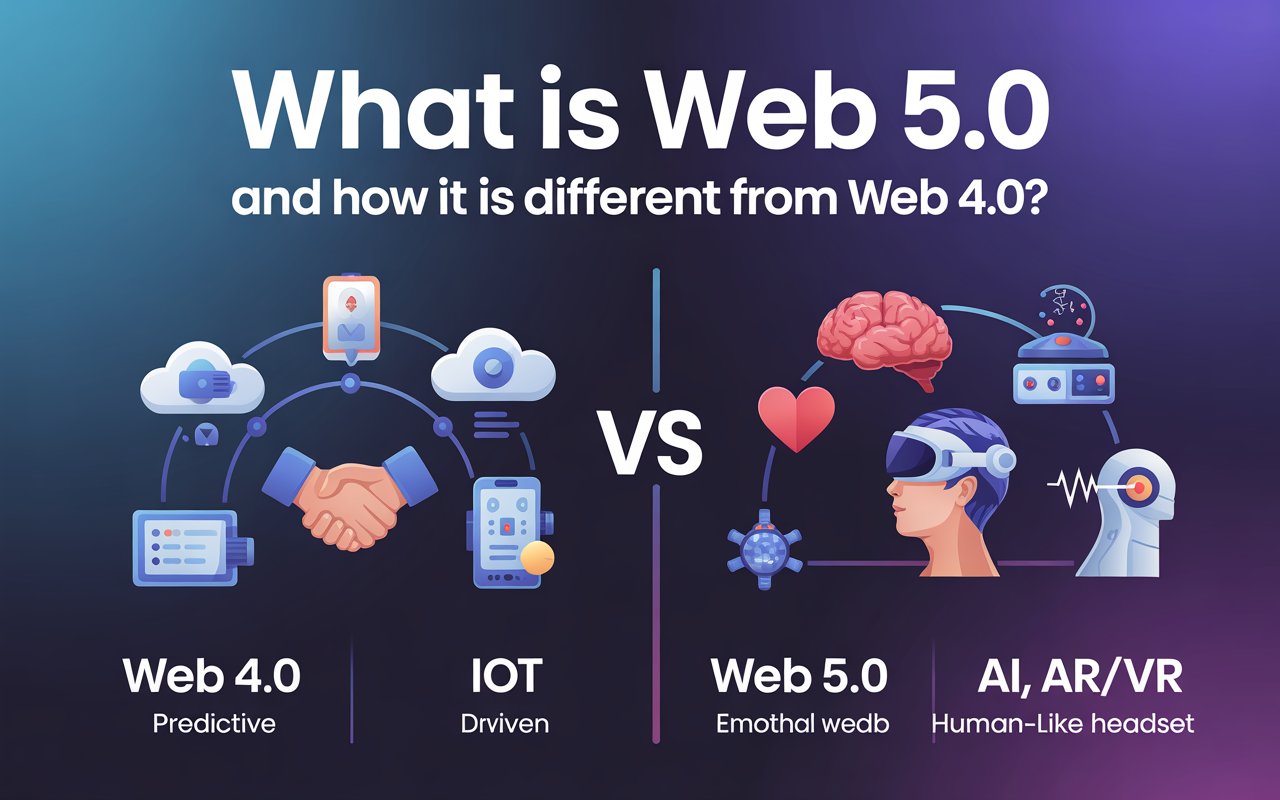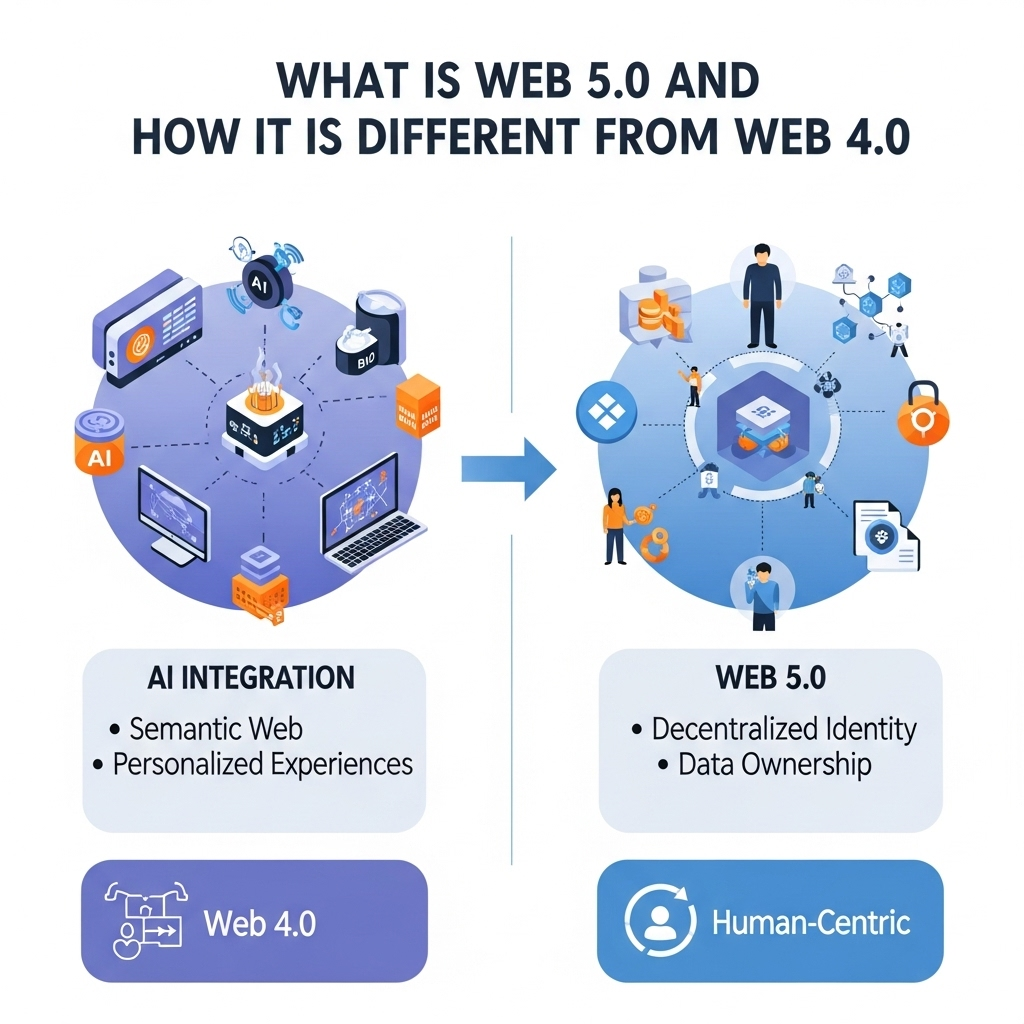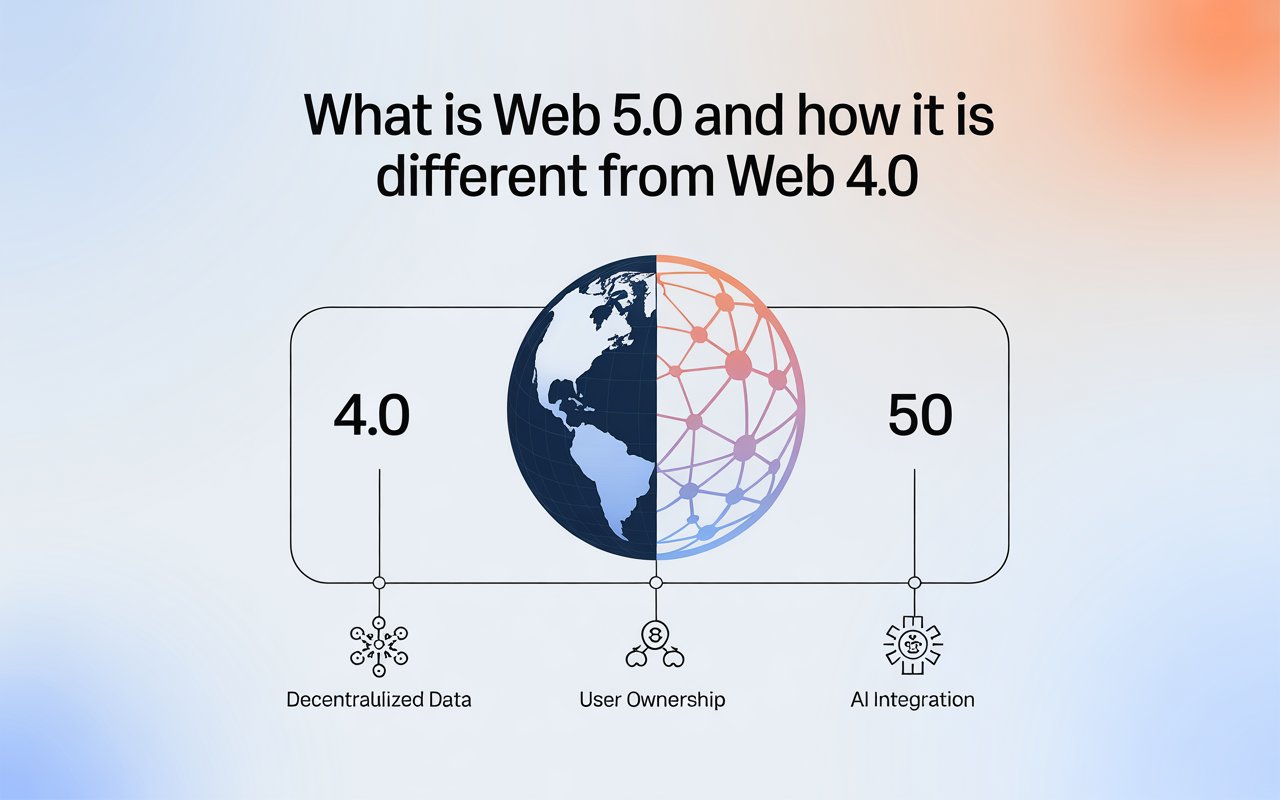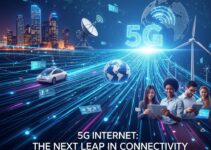Introduction
The internet has evolved through several transformative stages, from static Web 1.0 to the mobile-driven Web 4.0. As technology keeps moving forward, we’re entering a new age—Web 5.0. So, what exactly is Web 5.0, and how does it differ from Web 4.0? Unlike previous iterations, Web 5.0 goes beyond connectivity and data to create an emotionally intelligent, symbiotic web experience powered by AI.
To truly understand the future of digital interaction, it’s essential to explore what Web 5.0 is and how it is different from Web 4.0, while also looking at the debate of Web 5.0 vs. Web 4.0, which highlights how emotional intelligence, personalization, and advanced AI will transform the way we live, work, and connect online.
What is Web 5.0?
Web 5.0 is often referred to as the “emotional web,” where the internet evolves to understand and respond to human emotions using advanced AI, natural language processing, and immersive technologies like AR/VR. Its goal is to create deeply personalized and human-like interactions online.
Explain Web 5.0 vs. Web 4.0
Web 4.0 is the “symbiotic web,” focusing on seamless human–AI collaboration, predictive systems, and integration with IoT, while Web 5.0 goes further by adding emotional intelligence, enabling the web to detect feelings, moods, and context for richer, more human-centric digital experiences.
Understanding Web 5.0: The Symbiotic Web
The Progression of Web Technologies from 1.0 to 5.0
- Web 1.0: Websites that are static and intended exclusively for reading.
- Web 2.0: Content created by users and engaging social media platforms.
- Web 3.0: A web that understands data with linked information and content that machines can read.
- Web 4.0: Driven by mobile devices and the Internet of Things, using AI to offer services that predict what you need.
- Web 5.0: Interactions that are emotionally smart, really personalized, and work together in harmony.
Key Features and Capabilities of Web 5.0
- Real-time emotional recognition and adaptive responses.
- Deep AI integration for predictive and empathetic interactions.
- Hyper-personalization based on behavior, context, and sentiment.
The Concept of Emotional Interaction in Web 5.0
Web 5.0 aims to move beyond simply processing commands—it will understand human moods through voice tone, facial expressions, and even biometric signals, adjusting the user experience accordingly.
How AI Powers the Symbiotic Web Experience
Advanced AI models will process multimodal inputs (voice, video, text, and biometric data) to create interactive, emotionally responsive environments.
Web 4.0: The Mobile-Centric Approach
Core Characteristics of Web 4.0
- Cloud-based, mobile-first design.
- Seamless integration across devices.
- Focus on real-time data delivery.
The Focus on Connectivity and IoT Integration
Web 4.0 links up devices, cars, appliances, and wearables, forming an “Internet of Everything.”
Machine Learning Applications in Web 4.0
ML in Web 4.0 is predictive—suggesting products, optimizing searches, and enhancing automation.
Key Differences between Web 4.0 and Web 5.0
Feature Web 4.0 (Mobile-Centric) Web 5.0 (Symbiotic Web)
User Interaction Predictive, task-focused Emotionally aware, empathetic
Technology-based IoT, mobile-first, ML AI with emotional intelligence
Data Approach Big data & predictive analytics Sentiment-driven, contextual AI
Integration Physical device connectivity Emotional and cognitive integration
Real-World Applications of Web 5.0
• Smart Environments—Homes, offices, and public spaces that adjust lighting, temperature, and content based on emotional feedback.
• Healthcare Innovations—Mental health platforms that detect distress and offer instant intervention.
• Educational Transformations—Adaptive learning that changes tone, pace, and style depending on student engagement.
• Business and Commerce—Customer service bots that sense frustration and respond empathetically.
• Entertainment and Media – Games, VR, and streaming services that change narratives based on player/viewer mood.
Preparing for the Web 5.0 Future
Skills Needed for the Symbiotic Web Landscape
- AI and machine learning expertise.
- Emotional intelligence in UX/UI design.
- Data ethics and privacy management skills.
Ethical Considerations and Challenges
- Ensuring consent for emotional data collection.
- Avoiding manipulation through emotional profiling.
- Balancing personalization with privacy.
Timeline for Mainstream Web 5.0 Adoption
While early experiments in emotionally aware AI are already happening, experts predict broader adoption in the early to mid-2030s as infrastructure and standards mature.
Conclusion
Web 5.0 shows the jump from an internet that connects us to one that works together with us. While Web 4.0 gave us unprecedented connectivity, Web 5.0 will give us an internet that listens, understands, and responds to our emotions—creating more human-like digital experiences.
Frequently Asked Questions (FAQs)
What is Web 5.0 in simple terms?
Web 5.0, also called the Symbiotic Web, refers to the next stage of the internet where humans and machines interact emotionally and intelligently.
How is Web 4.0 different from Web 5.0?
Web 4.0 is centered on connectivity, mobile technologies, and IoT, while Web 5.0 goes further by integrating artificial intelligence and emotional interaction, creating a more personalized and adaptive digital experience.
What are the main features of Web 5.0?
Key features of Web 5.0 include emotional AI, intelligent personal assistants, smart environments, advanced personalization, and a symbiotic relationship between humans and machines.
Will Web 5.0 replace Web 4.0 completely?
No, Web 5.0 won’t completely take over Web 4.0, but it will grow out of it. While Web 4.0 emphasizes interconnectivity and real-time access, Web 5.0 builds on these strengths with emotional and intelligent interaction.



